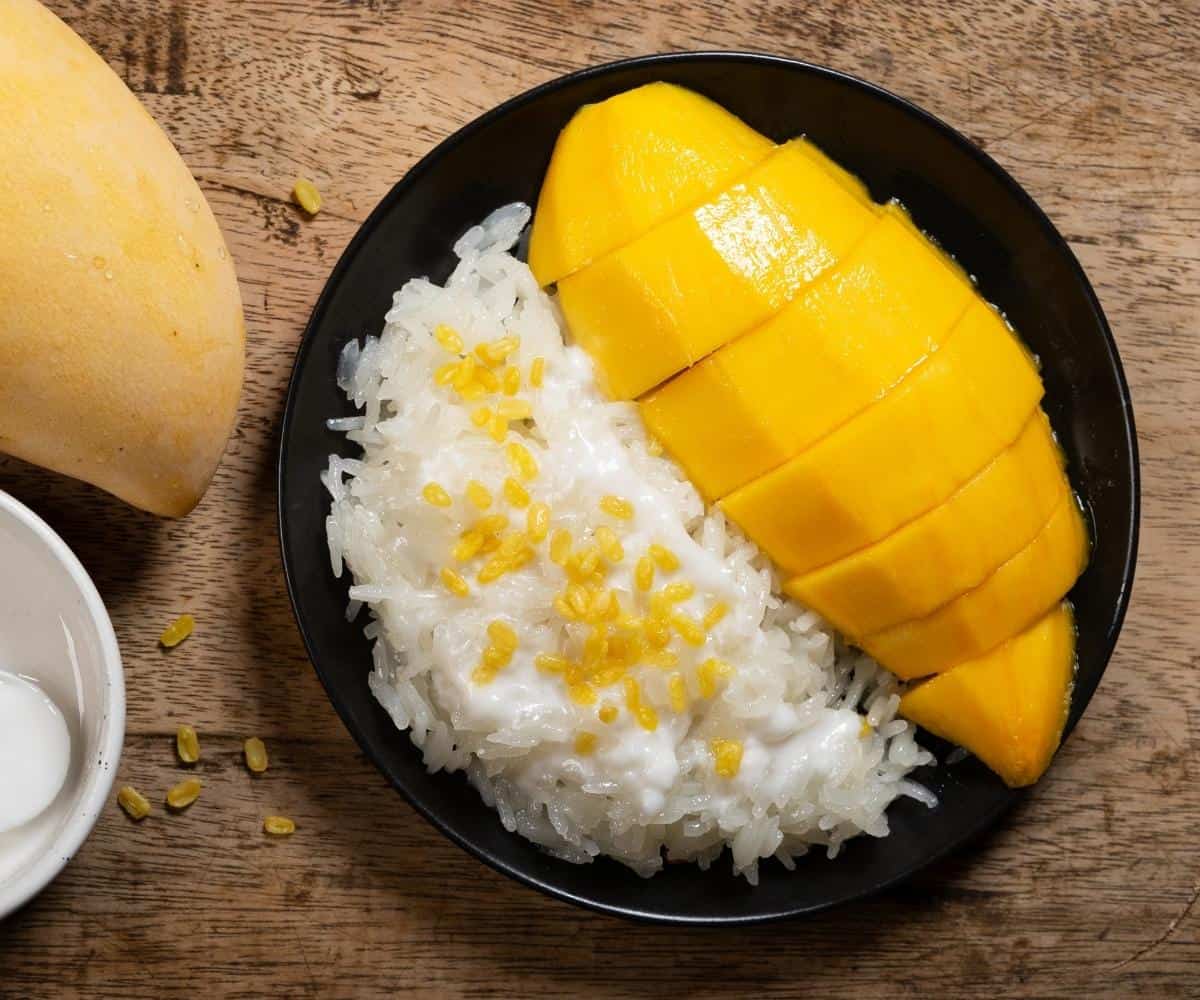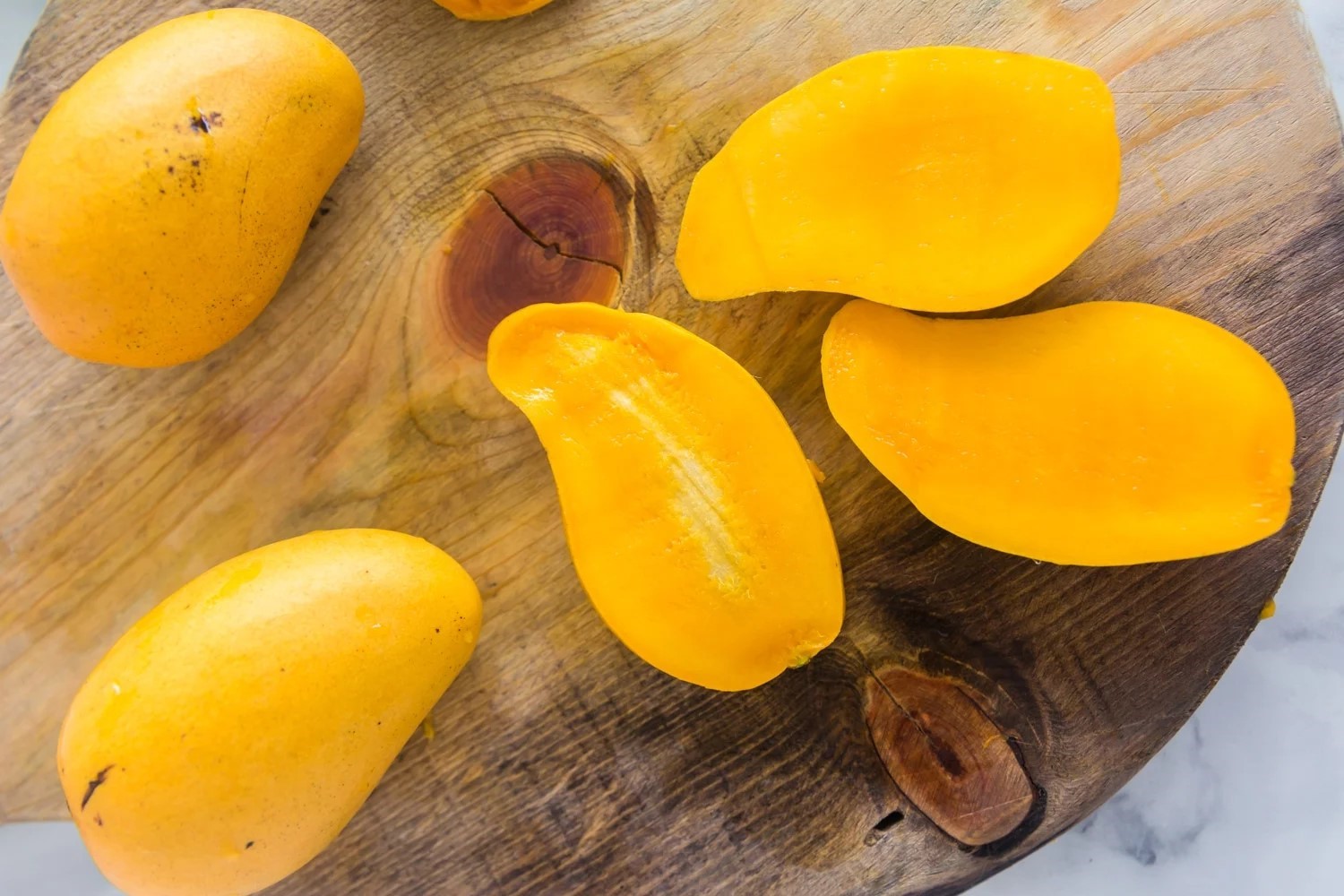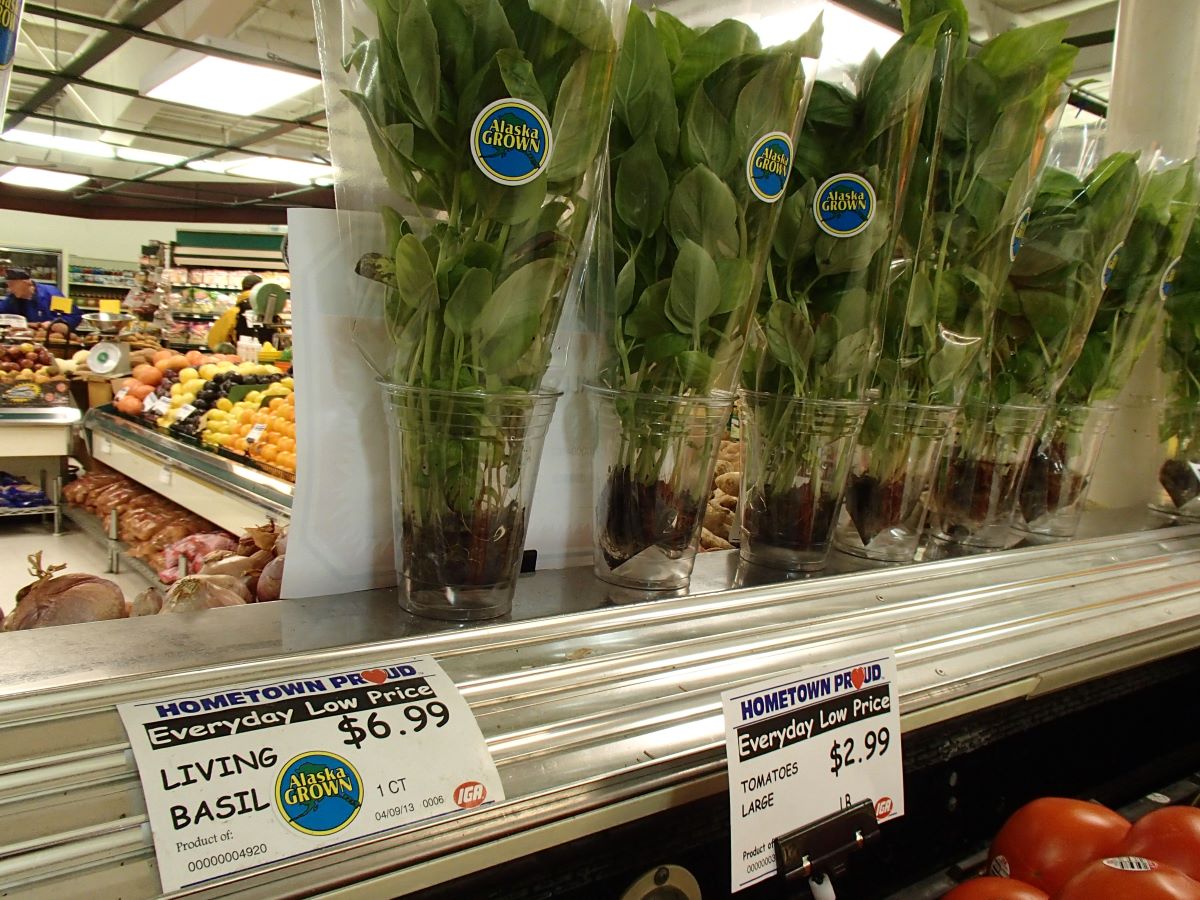

Articles
How To Store Mango
Modified: August 20, 2024
Learn the best techniques for storing mangoes in this comprehensive article. Find out how to keep mangoes fresh and delicious for longer periods of time.
(Many of the links in this article redirect to a specific reviewed product. Your purchase of these products through affiliate links helps to generate commission for Storables.com, at no extra cost. Learn more)
Introduction
Mangoes are delicious tropical fruits that are loved by people all over the world. With their juicy flesh and sweet flavor, mangoes are a favorite addition to various dishes and desserts. However, mangoes are seasonal fruits, and their availability may be limited to certain times of the year.
To ensure that you can enjoy mangoes all year round, it is essential to know how to store them properly. Storing mangoes correctly will help extend their shelf life and maintain their taste and texture.
In this article, we will discuss the factors to consider before storing mangoes, the proper handling and preparation techniques for storage, and the different storage methods you can use to keep your mangoes fresh. Whether you are storing mangoes at room temperature, in the refrigerator, or in the freezer, we have got you covered!
Key Takeaways:
- Proper storage of mangoes involves considering factors like ripeness, variety, and isolation to maintain their quality and freshness. Proper handling, labeling, and choosing the right storage method are essential for extending their shelf life.
- Storing mangoes at room temperature, in the refrigerator, or in the freezer offers flexibility based on consumption timelines. Selecting ripe mangoes, and knowing how to ripen them quickly, ensures a delightful tropical treat all year round.
Read more: How To Store Ripe Mangoes
Factors to Consider Before Storing Mangoes
Before you start storing mangoes, there are a few factors that you should consider to ensure optimal storage conditions. These factors play a crucial role in maintaining the quality and freshness of the mangoes.
- Ripeness: It is important to determine the ripeness of the mangoes before storing them. If the mangoes are overripe or bruised, they may spoil quickly. Look for mangoes that are firm but give slightly when pressed.
- Variety: Different mango varieties have varying shelf lives. Some varieties are more prone to spoilage and require special storage methods.
- Temperature: Mangoes are tropical fruits and do not tolerate cold temperatures well. They should be stored at the right temperature to prevent premature ripening or chilling injury.
- Humidity: Mangoes are sensitive to humidity fluctuations. High humidity can promote mold growth, while low humidity can cause the mangoes to dry out.
- Isolation: Mangoes give off ethylene gas, which can accelerate the ripening process of other fruits and vegetables around them. It is important to store mangoes separately to prevent premature ripening of other produce.
By considering these factors, you can create the ideal storage conditions for your mangoes, maximizing their shelf life and preserving their quality.
Proper Handling and Preparation of Mangoes for Storage
To ensure that your mangoes stay fresh and flavorful during storage, proper handling and preparation are key. Here are some important steps to follow:
- Washing: Before storing mangoes, wash them under running water to remove any dirt or residue on the skin. It is essential to handle the mangoes gently to avoid bruising.
- Drying: After washing, gently pat the mangoes dry with a clean towel. Excess moisture can lead to rot, so make sure the mangoes are completely dry before proceeding.
- Trimming: Inspect each mango and trim off any blemishes or damaged areas using a clean knife. This helps prevent the spread of decay and prolongs the fruit’s shelf life.
- Packaging: For long-term storage, wrap each mango individually in a paper towel or place them in perforated plastic bags. This protects the fruit from excess moisture while still allowing proper airflow.
- Labeling: Consider labeling the packages with the date of storage. This helps you keep track of the mangoes’ freshness and ensures that you consume them within the recommended timeframe.
Following these steps will help maintain the quality and freshness of the mangoes, allowing you to enjoy their deliciousness for an extended period.
Best Storage Methods for Mangoes
When it comes to storing mangoes, there are three main methods you can choose from: storing at room temperature, storing in the refrigerator, or storing in the freezer. Let’s explore each method:
- Room Temperature: Mangoes can be stored at room temperature if you plan on consuming them within a few days. Find a cool and dry spot away from direct sunlight. Place the mangoes on a countertop or in a fruit bowl with good airflow. Remember to check them regularly for any signs of spoilage or overripeness.
- Refrigerator: If you want to extend the shelf life of your mangoes, storing them in the refrigerator is a great option. However, keep in mind that storing in the fridge may slightly alter the texture and flavor of the mangoes. Place the mangoes in the crisper drawer or in a perforated plastic bag to maintain humidity levels. Properly stored, mangoes can last in the refrigerator for up to one week.
- Freezer: Freezing mangoes is an excellent way to preserve them for longer periods. The process is simple: peel and slice the mangoes, removing the pit. Lay the slices on a baking sheet and freeze them until solid. Once frozen, transfer the slices to airtight containers or freezer bags. Frozen mangoes can be stored for up to six months and are perfect for smoothies, desserts, and other recipes.
Choosing the right storage method depends on your preference and how long you plan to store the mangoes. Remember to consider the ripeness, variety, and storage conditions mentioned earlier to ensure optimal results.
Now that you know the best storage methods for mangoes, it’s time to enjoy the delicious taste of these tropical fruits all year round!
How to Store Mangoes at Room Temperature
If you prefer to store your mangoes at room temperature, follow these steps to ensure they stay fresh and delicious:
- Choose the right spot: Find a cool and well-ventilated area in your kitchen or pantry to store the mangoes. Keep them away from direct sunlight, as the heat can cause them to ripen too quickly or spoil.
- Handle them gently: Place the mangoes on a countertop or in a fruit bowl, making sure not to overcrowd them. Handle the mangoes with care to avoid bruising or damage.
- Inspect regularly: Check the mangoes daily for any signs of overripeness or spoilage. Look for soft spots, mold, or an unpleasant odor. Remove any mangoes showing these signs to prevent them from affecting the others.
- Separate ripening and ripe mangoes: If you have mangoes at different stages of ripeness, consider separating them. This prevents the ripe mangoes from releasing ethylene gas, which can speed up the ripening process of the others.
- Use within a few days: Mangoes stored at room temperature should be consumed within a few days for the best flavor and texture. As they are not exposed to cold temperatures like in the refrigerator, they will continue to ripen and may become overripe if left for too long.
By following these steps, you can enjoy ripe and delicious mangoes at room temperature. However, if you need to store them for longer periods, consider using the refrigerator or freezer storage methods mentioned earlier.
Now that you know how to store mangoes at room temperature, savor the tropical goodness of these juicy fruits whenever you crave them!
Store ripe mangoes in the refrigerator to slow down the ripening process and keep them fresh for longer. Unripe mangoes can be stored at room temperature until they ripen.
Read more: How To Store Fresh Mangoes
How to Store Mangoes in the Refrigerator
If you want to extend the shelf life of your mangoes, storing them in the refrigerator is a great option. Here’s how you can store mangoes in the refrigerator:
- Choose ripe but firm mangoes: Select mangoes that are ripe but still slightly firm. Overripe mangoes may not hold up well in the refrigerator and can become mushy.
- Leave the skin on: Unlike when storing at room temperature, it is best to leave the skin on when refrigerating mangoes. This helps protect the fruit and prevents moisture loss during storage.
- Place mangoes in the crisper drawer: The crisper drawer provides an ideal environment for storing mangoes in the refrigerator. It helps control humidity levels and minimizes exposure to ethylene gas from other fruits and vegetables.
- Use a perforated plastic bag: If you don’t have a crisper drawer or want an extra layer of protection, you can place the mangoes in a perforated plastic bag. This allows for proper airflow and prevents excess moisture buildup.
- Check regularly: While mangoes stored in the refrigerator can last up to one week, it’s important to check them periodically for any signs of spoilage. Remove any mangoes showing mold, soft spots, or an off odor to prevent them from affecting the others.
When you’re ready to enjoy your refrigerated mangoes, take them out of the refrigerator and let them come to room temperature for a few minutes. This will enhance their flavor and fragrance.
Storing mangoes in the refrigerator helps slow down the ripening process and keeps them fresh for a longer period. It’s a great option if you want to enjoy ripe and juicy mangoes over the course of several days.
Now that you know how to store mangoes in the refrigerator, keep them fresh and ready to enjoy whenever you’re in the mood for a sweet tropical treat!
How to Store Mangoes in the Freezer
Freezing mangoes is an excellent way to preserve their flavor and texture for an extended period. Here’s how you can store mangoes in the freezer:
- Choose ripe mangoes: Select fully ripe mangoes for freezing. Ripe mangoes have optimal sweetness and flavor.
- Peel and slice the mangoes: Peel the mangoes and remove the pit. Slice them into desired sizes and shapes. You can choose to have thick slices or small cubes, depending on your preference.
- Spread the mango slices on a baking sheet: Arrange the mango slices in a single layer on a baking sheet lined with parchment paper or a silicone mat. Make sure the slices are not touching each other, as this allows for quick and even freezing.
- Freeze until solid: Place the baking sheet with the mango slices in the freezer and let them freeze until solid. This typically takes about 2-3 hours.
- Transfer to airtight containers or freezer bags: Once the mango slices are frozen, transfer them into airtight containers or freezer bags. Make sure to remove any excess air from the bags before sealing them tightly.
- Label and date: It’s important to label each container or bag with the content and the date of freezing. This will help you keep track of the mangoes and ensure that you use them within the recommended storage time.
Frozen mangoes can be stored in the freezer for up to six months. They are perfect for adding to smoothies, making mango sorbet, or using in various recipes.
When you’re ready to use the frozen mangoes, simply remove the desired amount from the freezer and thaw them in the refrigerator or at room temperature. They will become soft and ready to enjoy in no time!
By freezing mangoes, you can enjoy their tropical goodness even when they’re out of season. Whether you want to add them to your favorite recipes or enjoy them as a refreshing snack, frozen mangoes are a convenient and delicious option.
Now that you know how to store mangoes in the freezer, stock up on this tropical delight and savor it all year round!
Tips for Selecting Ripe Mangoes for Storage
Choosing ripe mangoes is crucial for optimal storage and flavor. Here are some tips to help you select the best mangoes for storage:
- Firmness: Look for mangoes that are slightly firm to the touch. Avoid mangoes that are too soft or squishy, as they may be overripe and prone to spoilage.
- Color: The color of a mango can vary depending on the variety. However, a ripe mango should have vibrant hues, ranging from golden yellow to reddish-orange. Avoid mangoes with green patches, as they are likely to be unripe.
- Aroma: Sniff the stem end of the mango. Ripe mangoes give off a sweet and fragrant aroma. If the mango has no scent or has a sour smell, it may not be ripe.
- No blemishes or bruises: Inspect the mangoes for any signs of bruising, blemishes, or cuts. These can indicate damage and may lead to spoilage during storage.
- Check for wrinkles: Gently squeeze the mango to feel for any wrinkles. Wrinkles can be a sign of overripeness or dehydration, which may affect the quality of the fruit.
It’s important to note that different mango varieties have different characteristics, so understanding the specific characteristics of the variety you are purchasing can be helpful in selecting the ripest mangoes.
Additionally, if you plan to store mangoes for a longer period, it is best to choose mangoes that are slightly underripe. These mangoes will continue to ripen during storage and will have a longer shelf life.
By following these tips, you can ensure that you select the ripest and highest-quality mangoes for storage, allowing you to enjoy their juicy goodness even after they have been off the tree for some time.
How to Ripen Mangoes for Immediate Consumption
If you have purchased mangoes that are slightly underripe and you want to enjoy them sooner rather than later, here are some tips on how to ripen mangoes quickly:
- Place mangoes in a paper bag: Put the mangoes in a paper bag, preferably along with a ripe banana or apple. These fruits release ethylene gas, which speeds up the ripening process of the mangoes.
- Seal the bag: Fold the top of the paper bag and seal it to create a closed environment for the mangoes. This helps trap the ethylene gas and concentrates it around the mangoes to promote ripening.
- Keep at room temperature: Leave the sealed paper bag of mangoes at room temperature, away from direct sunlight. The warmth and the concentrated ethylene gas will accelerate the ripening process.
- Check regularly: Check the mangoes daily to see if they have ripened to your desired level of readiness. Gently squeeze them to evaluate their firmness. Once they yield slightly to pressure and have a slightly soft texture, they are ready to be enjoyed.
This ripening method typically takes anywhere between 1-3 days, depending on the initial ripeness of the mangoes. It’s important to note that overripe mangoes can quickly turn soft and mushy, so be sure to check them regularly to avoid over-ripening.
Once your mangoes are ripe and ready, you can refrigerate them to slow down the ripening process and extend their shelf life or enjoy them immediately.
By following these steps, you can ripen mangoes quickly for immediate consumption and savor their juicy sweetness at the perfect ripeness.
Read more: How To Store Unripe Mangoes
Conclusion
Mangoes are delightful tropical fruits that bring a burst of sweetness to any meal or snack. Learning how to store mangoes properly ensures that you can enjoy their delicious flavor and aroma all year round.
Before storing mangoes, consider factors such as ripeness, variety, temperature, humidity, and isolation. These factors play a crucial role in maintaining the quality and freshness of the mangoes during storage.
Properly handling and preparing mangoes for storage involves washing, drying, trimming, packaging, and labeling. These steps help protect the fruit and prevent spoilage during storage.
The best storage methods for mangoes include storing at room temperature, in the refrigerator, or in the freezer. Each method has its benefits and allows you to extend the shelf life of mangoes according to your needs and preferences.
If you choose to store mangoes at room temperature, find a cool and dry spot and separate ripe mangoes from other produce. Storing mangoes in the refrigerator helps slow down the ripening process, while freezing mangoes allows you to preserve them for a longer period.
When selecting ripe mangoes for storage, consider factors such as firmness, color, aroma, and the absence of blemishes. These indicators will help you choose mangoes that are at their peak ripeness and can be stored successfully.
Lastly, if you have underripe mangoes and want to ripen them quickly for immediate consumption, place them in a paper bag with a ripe banana or apple, seal the bag, and keep it at room temperature. Checking the mangoes regularly will ensure that they ripen to your desired level.
In conclusion, by following these storage techniques and tips, you can enjoy the delightful taste of mangoes whenever you desire. Whether you enjoy them fresh, chilled, or in your favorite recipes, properly stored mangoes will always bring a tropical touch to your table.
Frequently Asked Questions about How To Store Mango
Was this page helpful?
At Storables.com, we guarantee accurate and reliable information. Our content, validated by Expert Board Contributors, is crafted following stringent Editorial Policies. We're committed to providing you with well-researched, expert-backed insights for all your informational needs.














0 thoughts on “How To Store Mango”